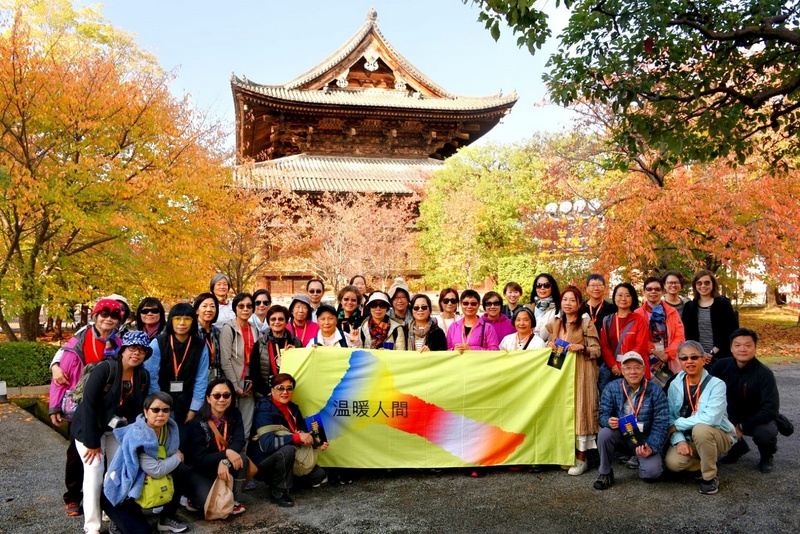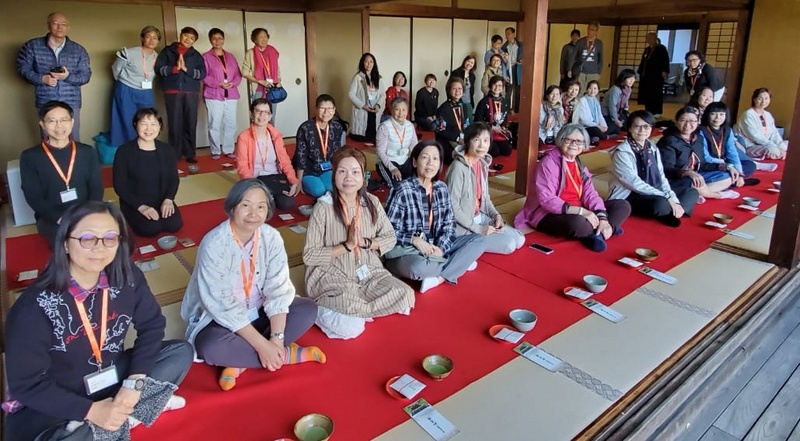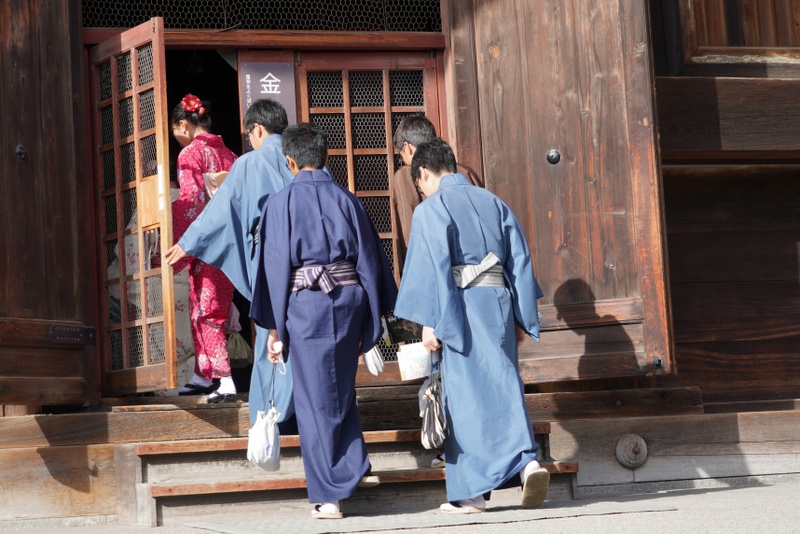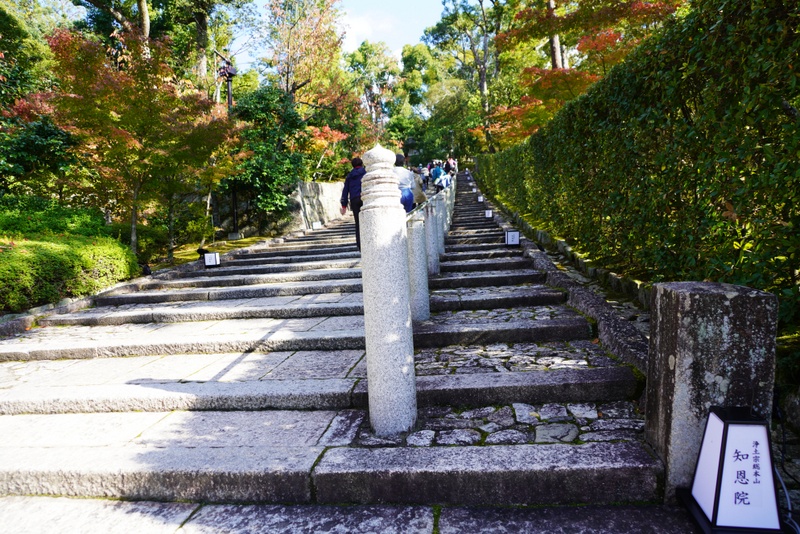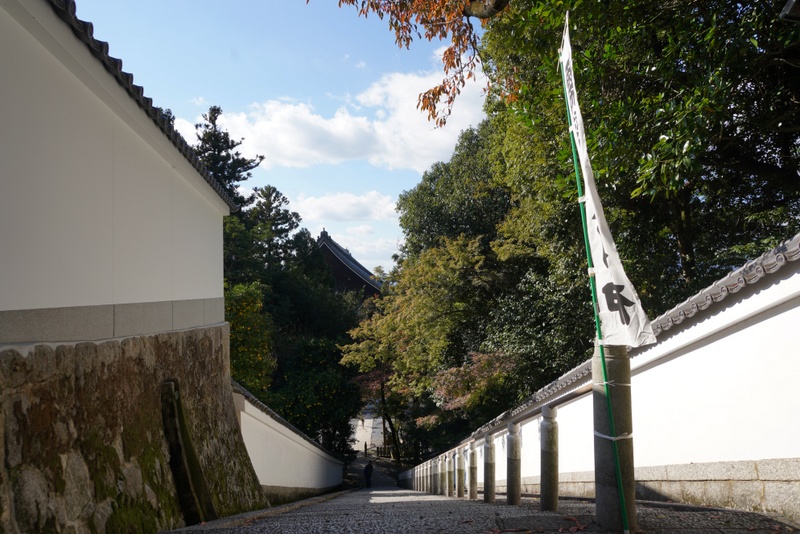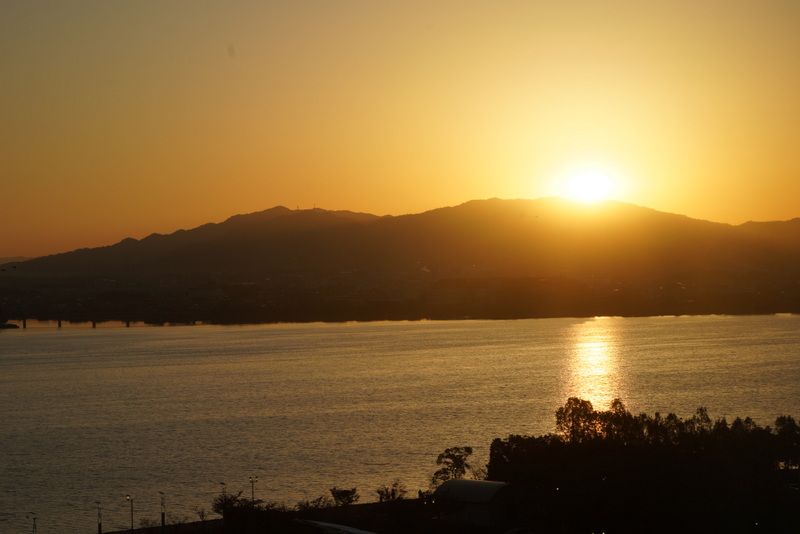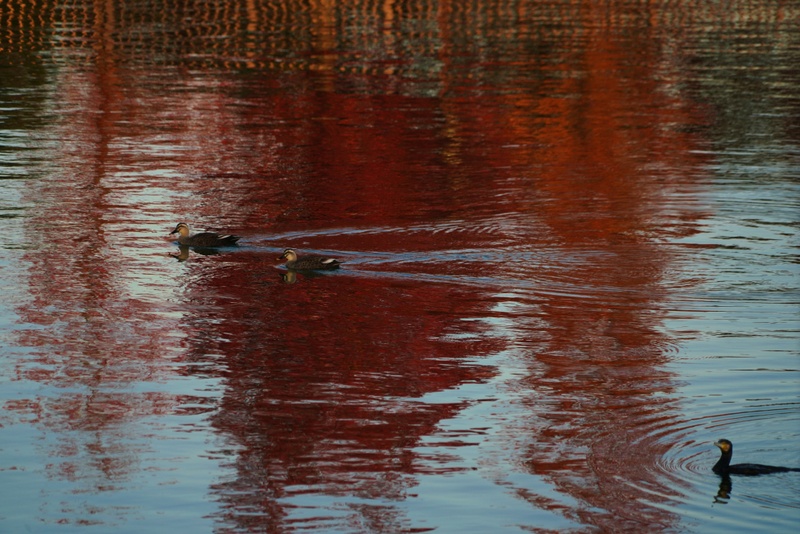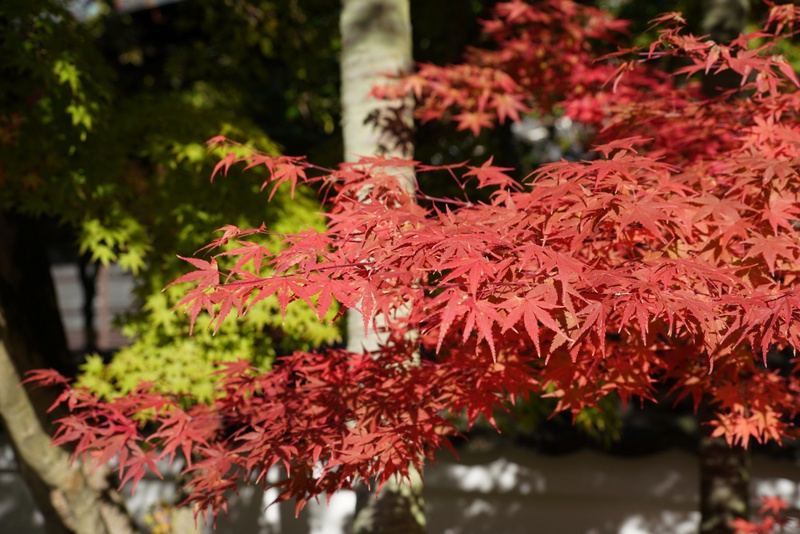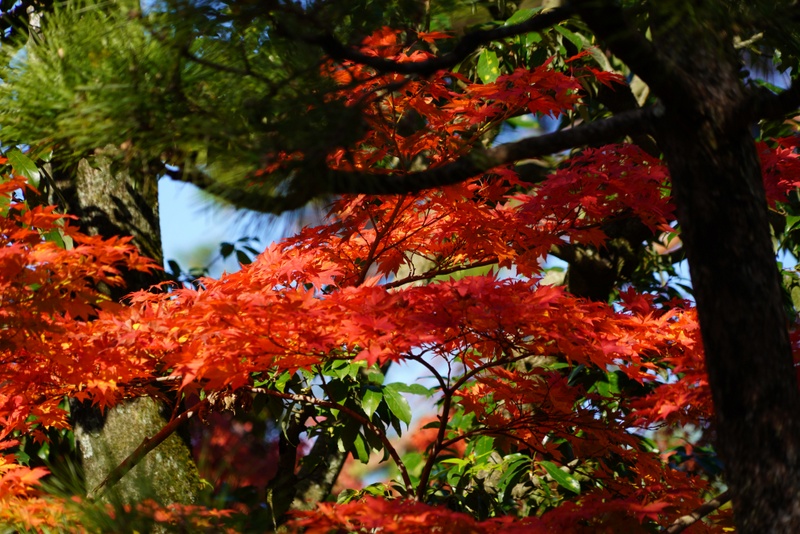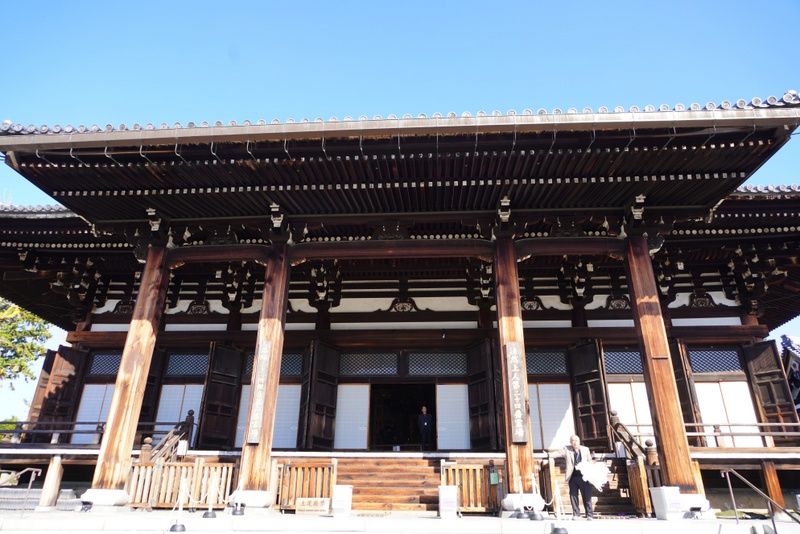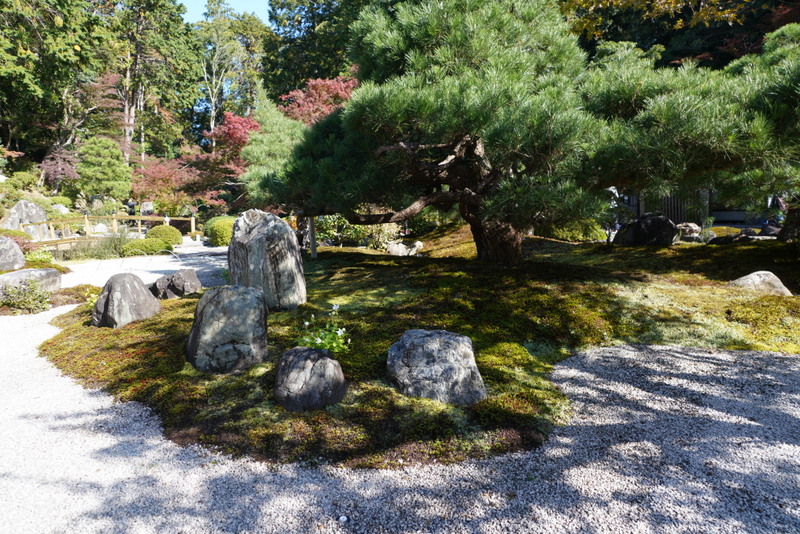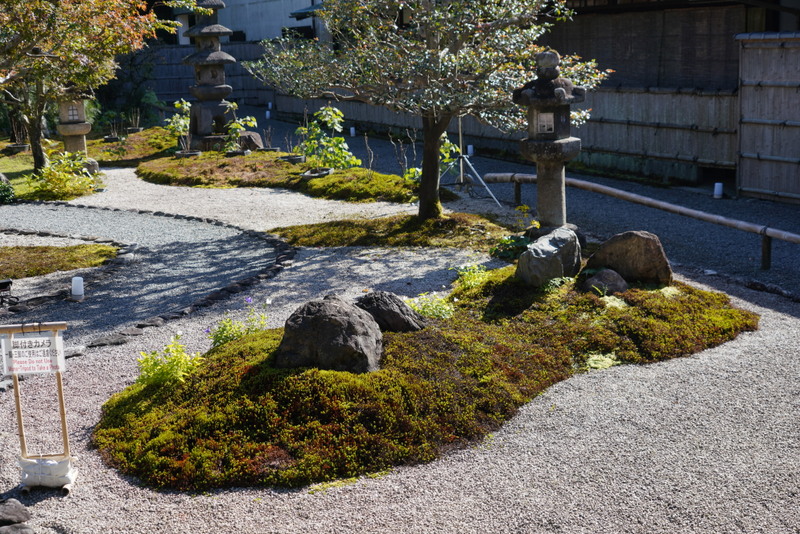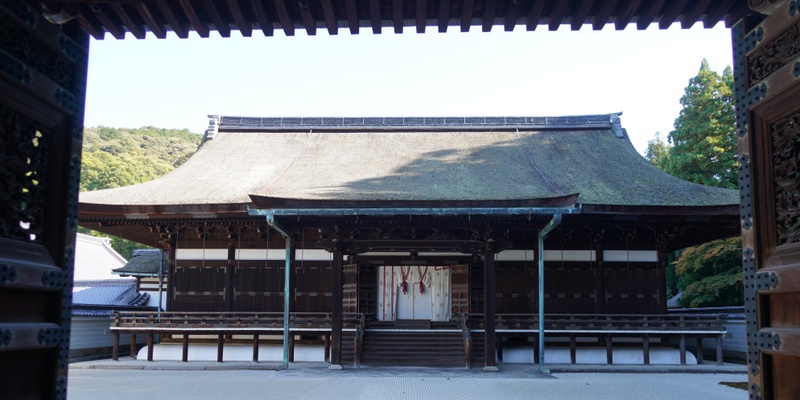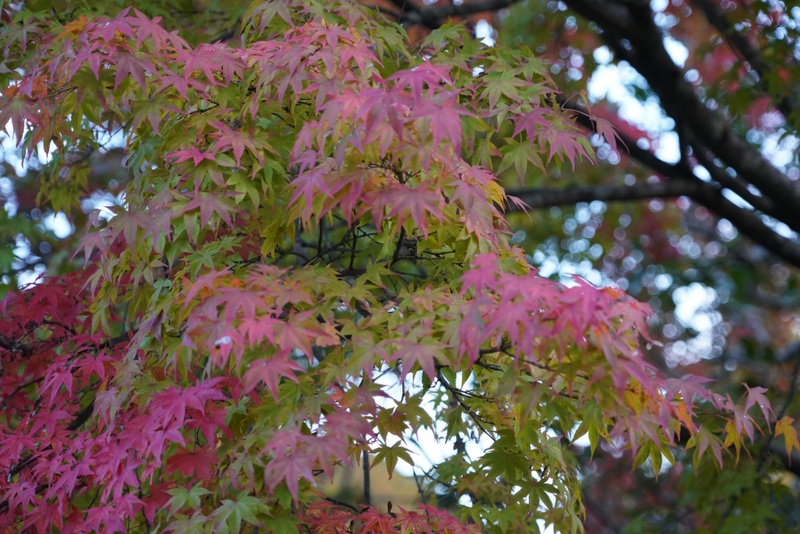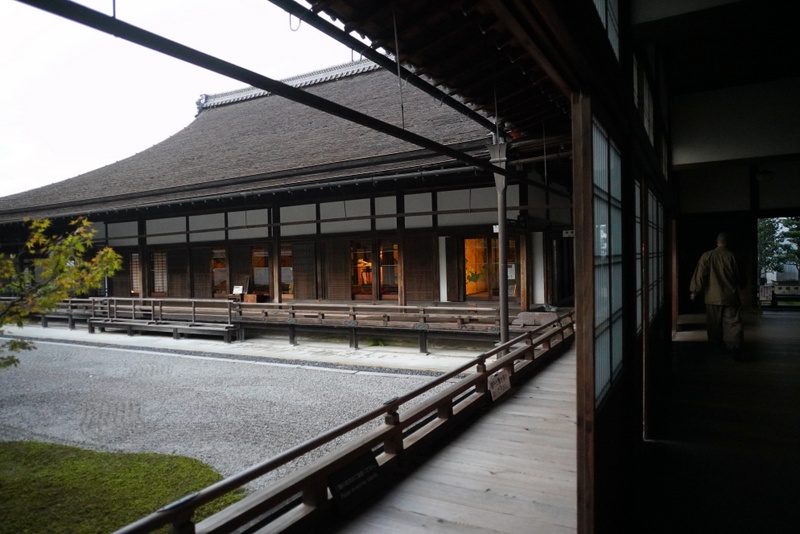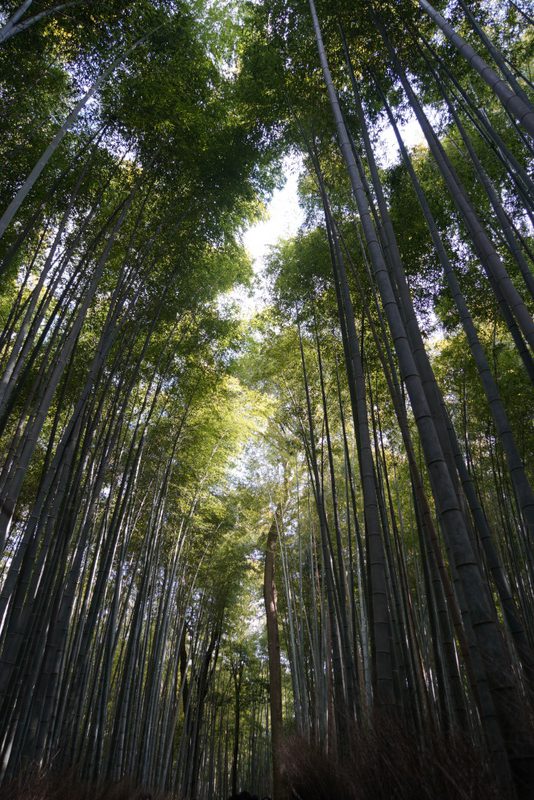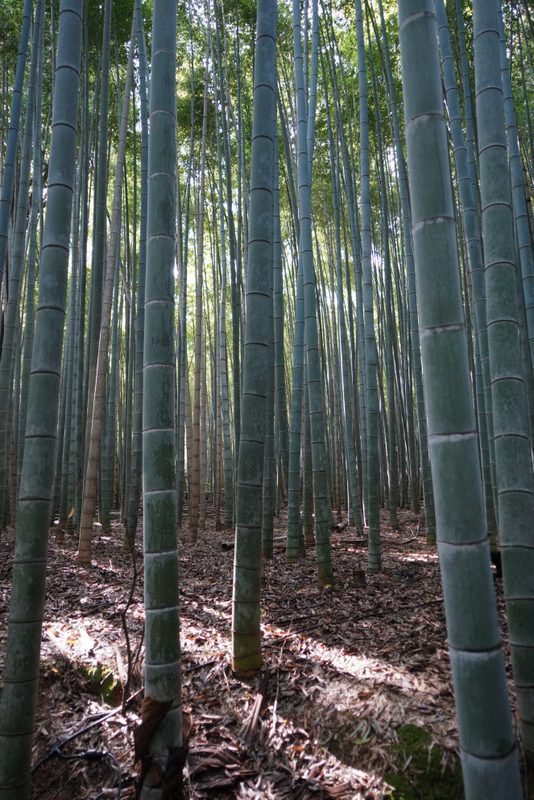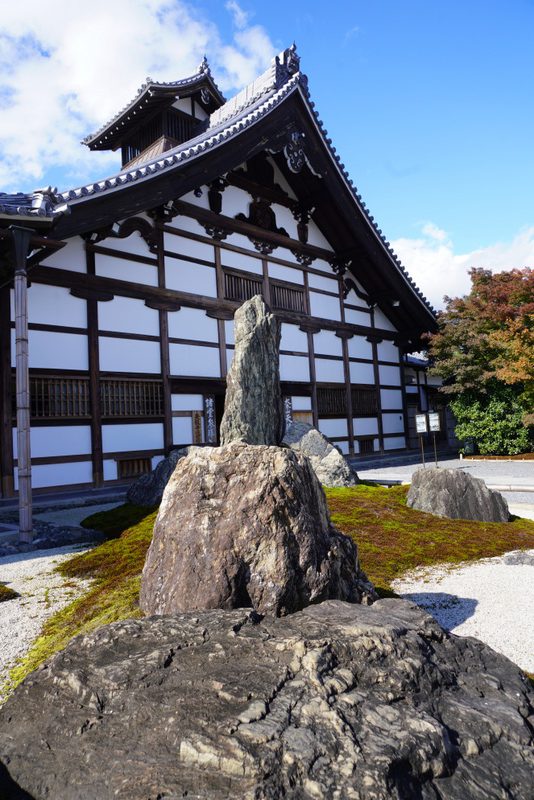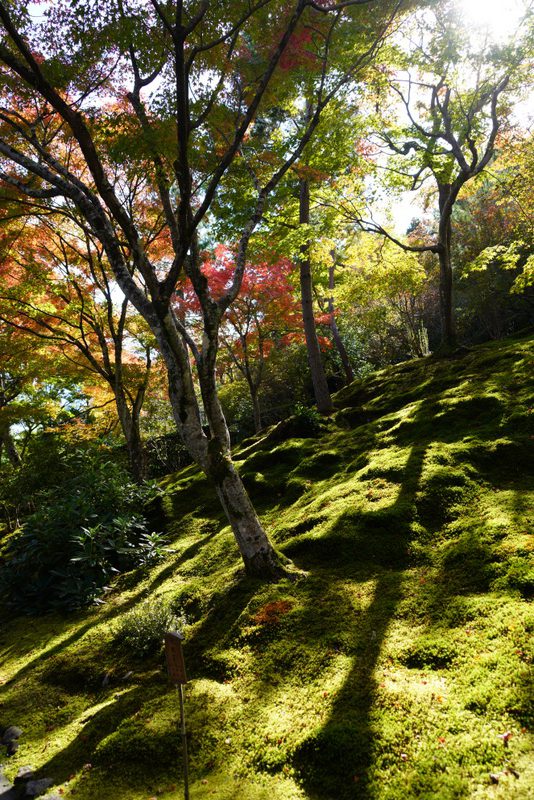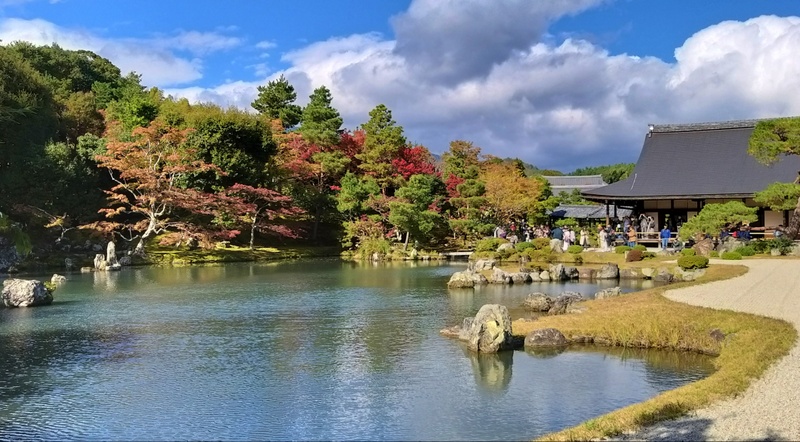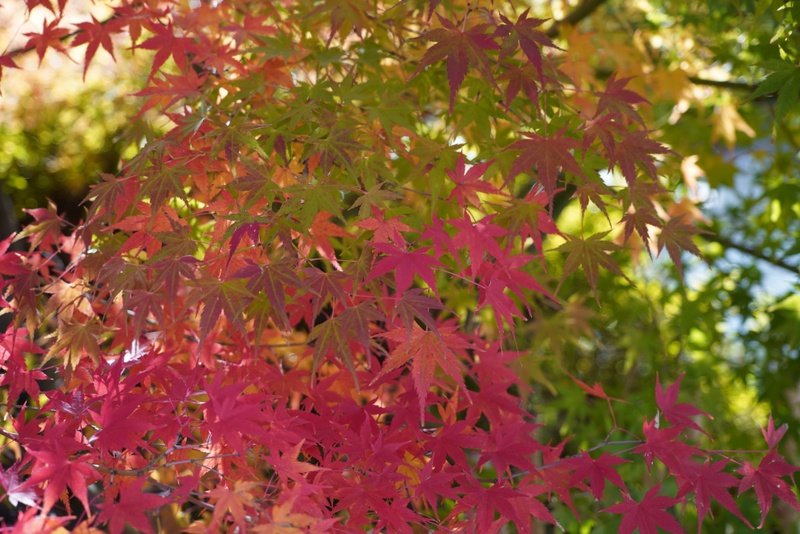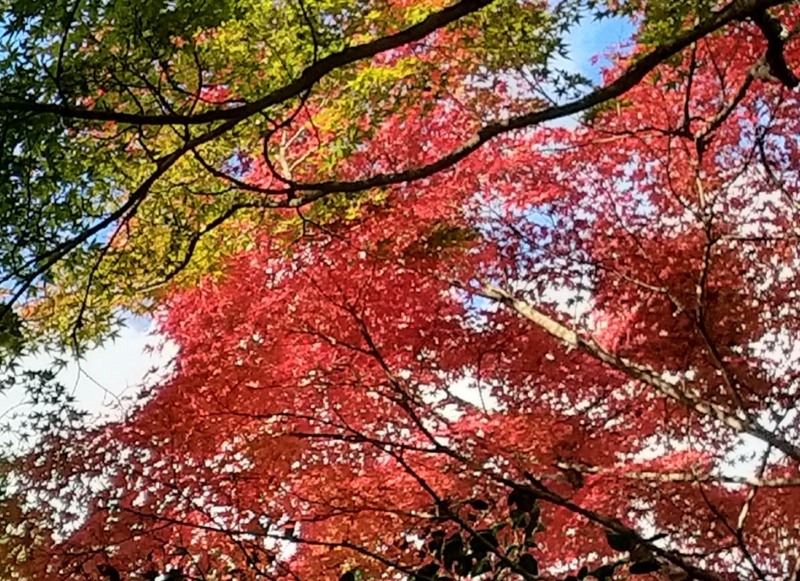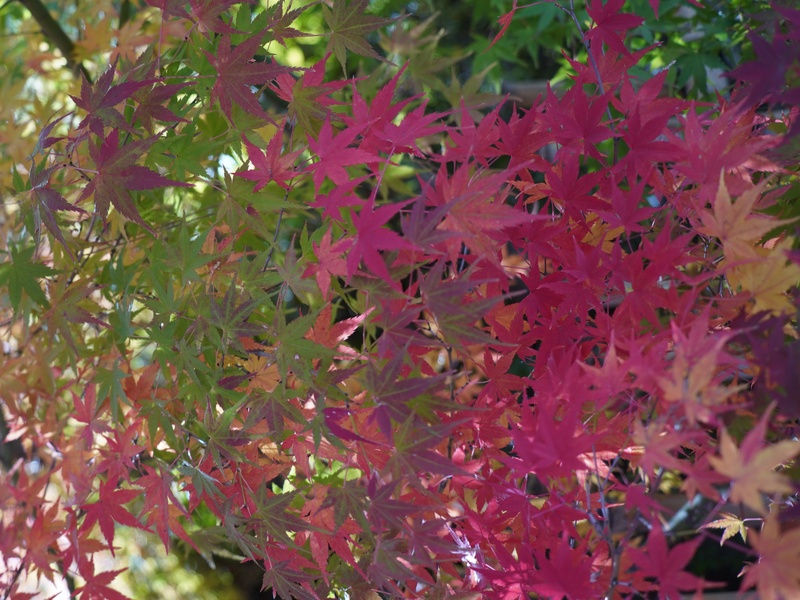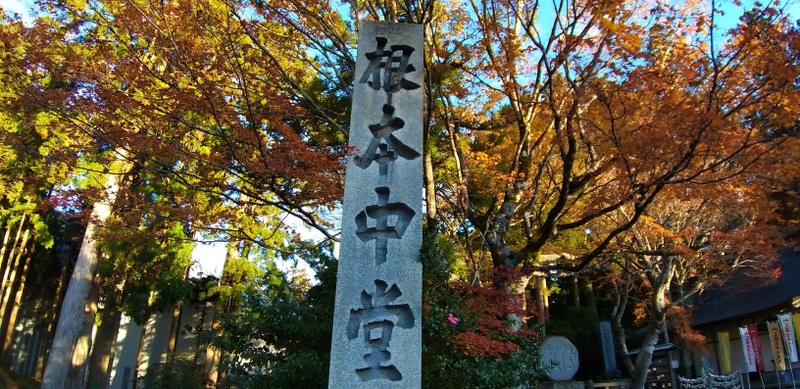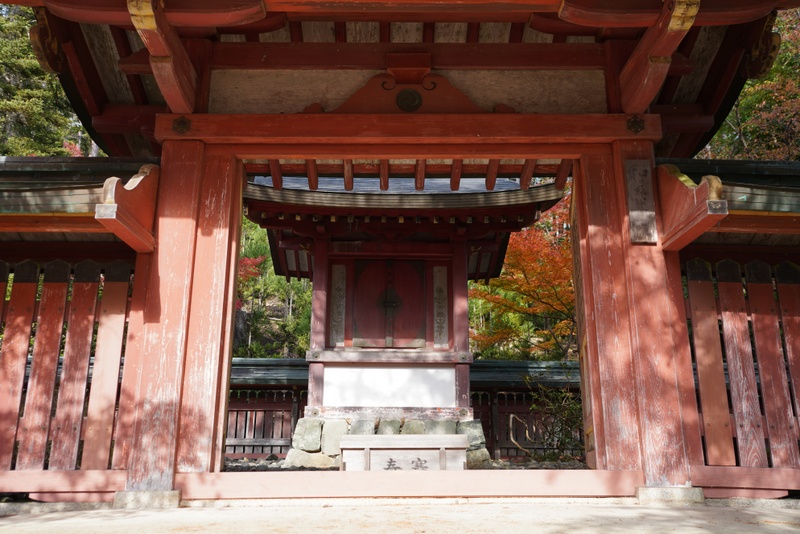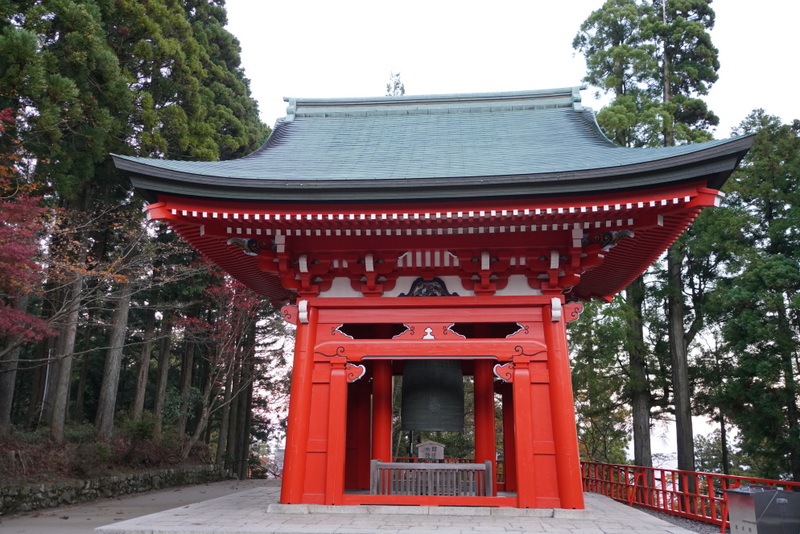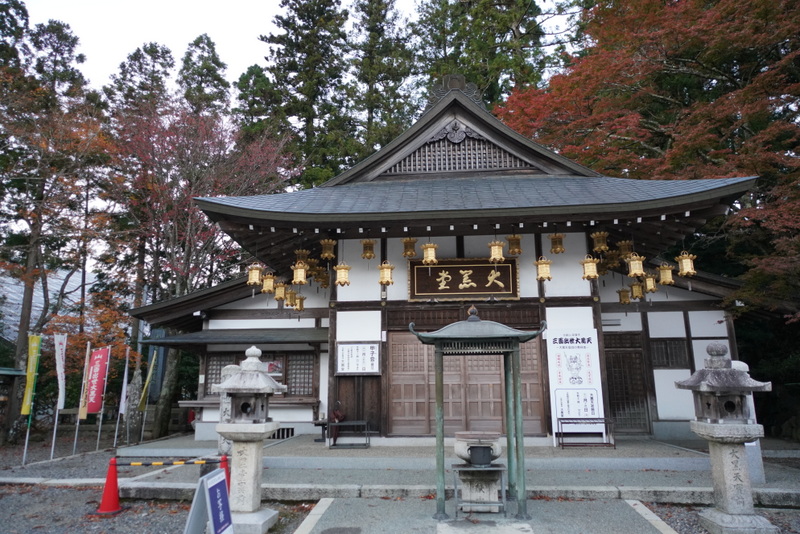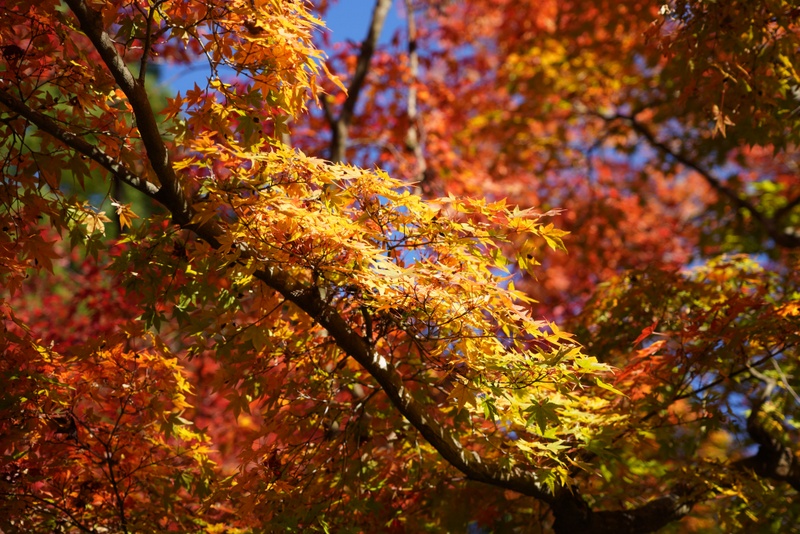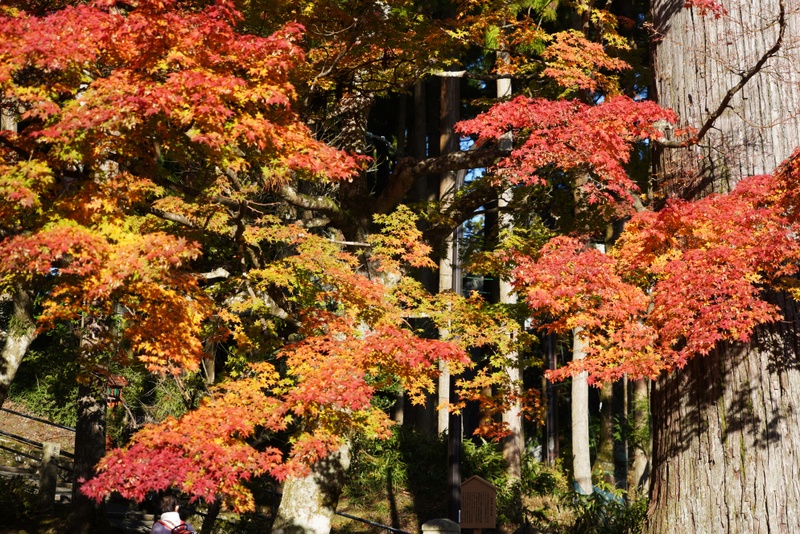November 11 – 15: 5-day Temple Tour
37 participants joined a 5-day temple tour organised by the Buddhist Charity Work Shop Ltd. We would have vegetarian meals, visit ten temples in four days and stay in Prince Hotel by Biwa Lake for the first three night and in Mount Hiei for the last night. Catherine, my friend, was my roommate.
Day 1 November 11 Monday: Osaka
Originally the group from Hong Kong would be arriving at the Kansai Airport around 1 pm. The group would then visit and had dinner in a temple in Kyoto. As I would already be in the area, I asked the leader whether I could meet them at the temple instead of at the airport. My request was turned down. In order to make things easy for the organiser, I agreed to go to the airport. Then the flight was delayed and the new arrival time would be about 3:30 pm. I asked again whether I could wait for the group in town. “No” was the answer.
I literally wasted the whole day. After checking out at 10 am, I took a train from Osaka Station to the airport (¥1,210 one way). I arrived at the airport around midday. The group did not come out till 4 pm. When I met the local guide, Miss Wong, I told her about my frustration. She said I could have waited for the group in the restaurant in town. I wonder whether MY, our guide from Hong Kong, had ever referred my request to Miss Wong for advice.
I watched a beautiful sunset on the way to the restaurant next to a temple not far from the Prince Hotel. I could have easily found my way to the restaurant and met up with the group.
Today was a frustrating day for me. As an efficient time-manager and an independent traveller, I rarely have problems in finding my way. I have joined a few pilgrimage tours arranged by MY’s company. Why did he fail to take my point and understand my frustration? Well, I have learnt to let go and stay calm. While waiting at the airport, I found a quiet corner and spent my time on writing my travel notes. I won’t waste time. That’s my motto.
Day 2 November 12 Tuesday: Three Temples in Kyoto
We had a leisure day visiting two temples in the morning and one in the afternoon.
Toji 東寺is a Shingon Buddhist temple founded in 796 by Kukai (also known as Kobo Daishi). Shingon Buddhism真言宗 is one of the major schools of Buddhism in Japan and one of the few surviving Vajrayana lineages in East Asia that spread from India to China through travelling monks such as Vajrabodhi and Amoghavajra.
The temple houses treasures and documents from the early Heian Period (794-1185) and the Tang dynasty (618-907). The main buildings in the complex include –
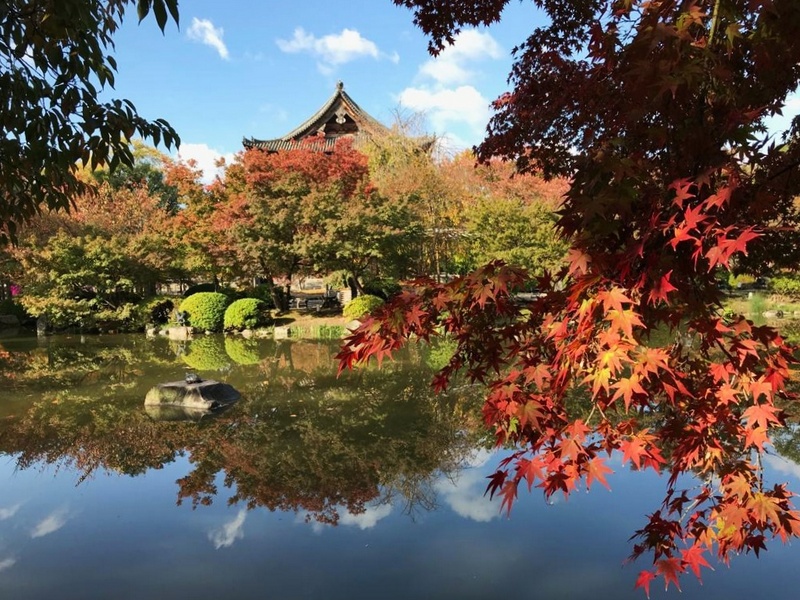
- the Lotus Flower Gate
- the Miei Hall dedicated to KuKai
- the Kodo with 21 statues in four groups. This Lecture Hall was first built by Kukai in 835 and rebuilt in 1491
- the Golden Hall with a statue of Yashu Buddha. It is the main hall of the temple and was rebuilt in 1603
- the 55m-high five-storied Pagoda (rebuilt in 1644)
These buildings from the Kamakura, Muromachi, Momoyama and Edo periods are all designated National Treasures.
My last visit to Toji was in spring time. It is nice to see its foliage colours. I prayed for peace in Hong Kong while I was in the Golden Hall and Kodo.
It was my third time to see the statues in the Kodo Hall. Each time I look at them, I am filled with awe, admiration and respect for the craftsmen, sculptors and artists.
Sanjusangen-do三十三間堂, a temple of the Tendai sect 天台宗, was founded in 1164 by Taira no Kiyomori for the cloistered Emperor Go-Shirakawa. It is officially known as Rengeo-in蓮華王院 (Hall of the Lotus King). As there are 33 spaces between the columns, this temple came to be called “sanjusangen-do”.
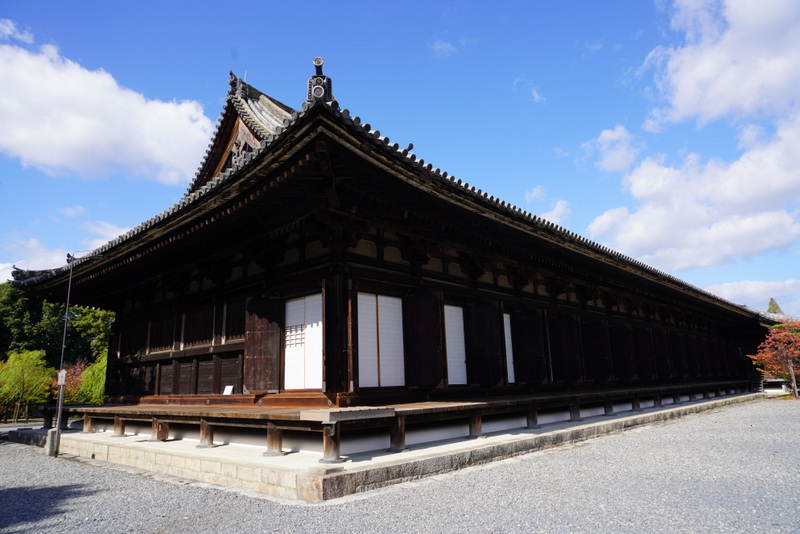
It is famous for its massive long main hall (120m long) dating from 1266 (Kamakura period) and collection of sculptures, most of them dating to the Heian to Kamakura periods.
- 1001 standing Thousand-armed Kannon made of Japanese cypress. 124 were made in 1164 when the temple was founded. Remaining 876 statues were made in the 13th century when the temple was renovated.
- a seated statue of Thousand-armed Kannon– the principle image of the temple
- 28 standing attendants / guardian deities
- statues of Fujin (Wind God) and Raijin (Rain God)
I visited this temple on my first visit to Kyoto possibly 20 years ago. With more understanding of Buddhism and Buddhist art in recent years, I appreciate more what I see today.
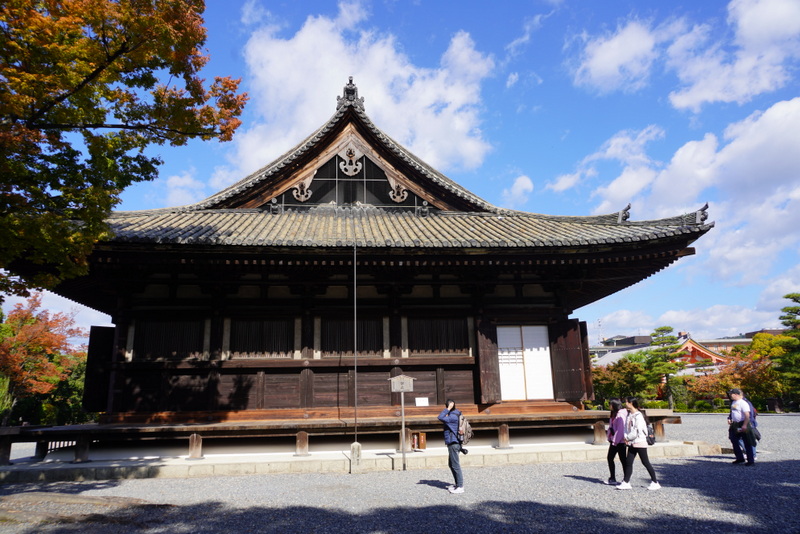
The Japanese are perfectionist and meticulous: their passion and strive for beauty and perfection are most admirable. I am impressed by the information provided to visitors on site. It was the first time I learnt about the symbolic meaning of each of the 40 items held or found on the body of the Thousand-armed Kannon.
After a nice lunch in Gion, we spent the afternoon in Chion-in 知恩院, the headquarters of the Jodo-shu 浄土宗 (Pure Land Sect) founded by Honen法然 (1133-1212). He became a Tendai initiate at an early age. But he grew disaffected and sought an approach to Buddhism that anyone could follow. After discovering the writings of the Chinese Buddhist Shandao (613-681) 善導大師, he undertook the teaching of rebirth in the pure land of Amitabha through recitation of the Buddha’s name i.e. “nembutsu-only”.
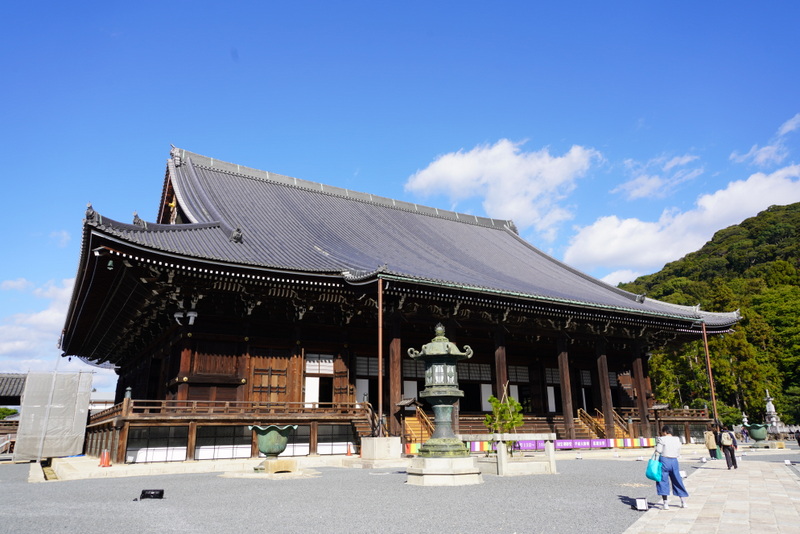
The temple has the largest wooden tower gate – Sanmon in existence in Japan. Measuring 24m-high and 50m-wide, this gate was built by Tokugawa Hidetada, the second Tokugawa shogun in 1621.
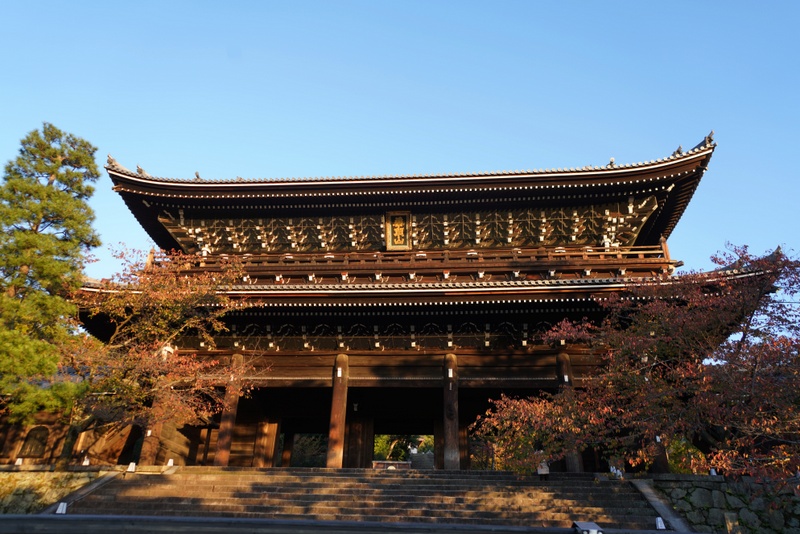
We went to Seishido, the site where Honen meditated and propagated his teaching of “nembutsu-only” during his final days. It was rebuilt in 1530.
We were met by a monk who talked about Honen and introduced us to the script which we would be copying in ink. The script was written by Shandao who had a great impact on Honen. With respect and dedication, we took 40 to 60 minutes to complete the copying. Our copies are now kept in the temple.
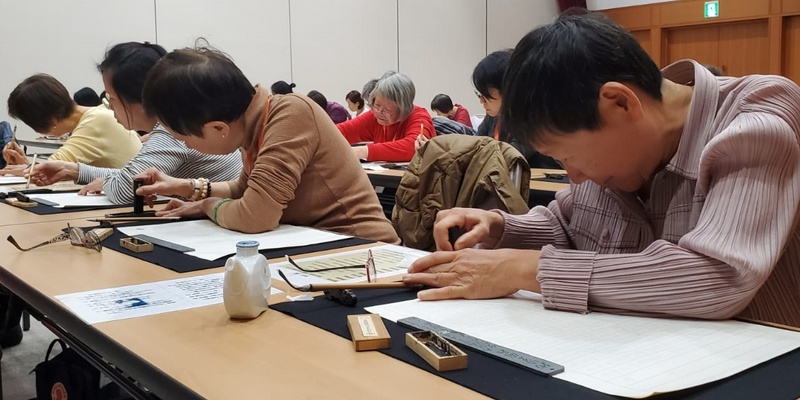
We had tea in another room with panoramic views of Kyoto. We could not visit the main hall which is under renovation. I love to visit the Hojo Garden which was designed in the early Edo period (1600-1868). But it was just closed when I arrived at the gate. What a pity!
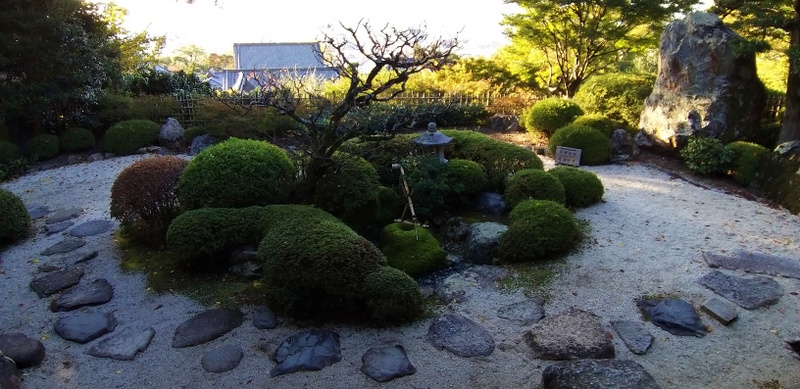
We left the temple around 4:30 pm. Tonight we had an early dinner in Takase-gawa Nijo-en garden – a beautiful garden restaurant located next to Takase River in Nijo (the second street).
This garden was built by Ryoui Suminokura (1554-1614), a billionaire merchant in Kyoto who made his fortune by trading with Vietnam. He built the Takase River (which is a canal) to transport goods by boat between Kyoto and Osaka. Later, he built his second home and garden on this site. Aritomo Yamagata (1838-1922) a founder of the Imperial Army and Prime Minister twice under the Meiji Government, purchased Nijo-en and commissioned Jihei Ogawa VII (1860-1933), a respected gardener to design the garden that we see today.
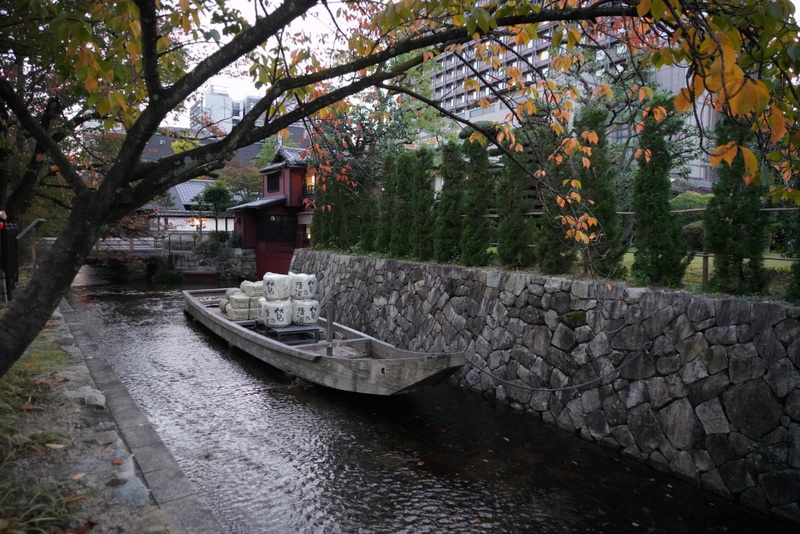
Cat and I walked along Nijo and saw the canal built by Ryoui Suminokura. The street is lined with high-class and expensive restaurants.
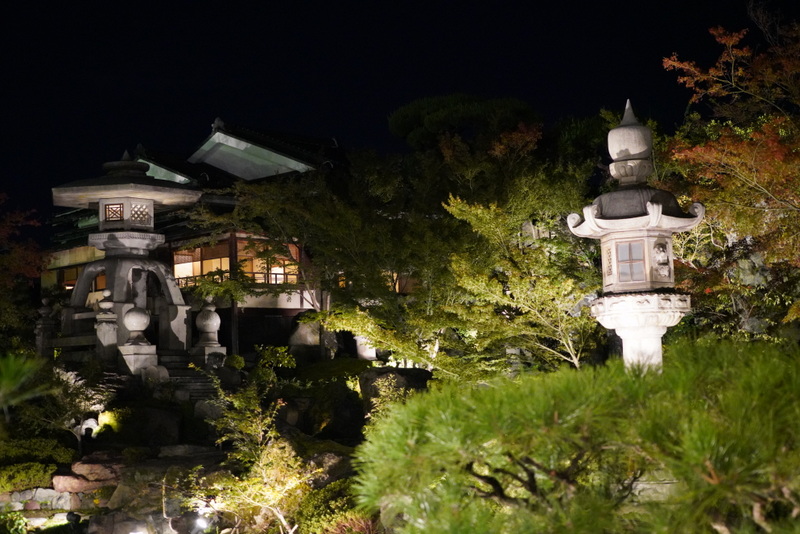
After dinner, we took a quick look at the beautiful landscaped garden that has a waterfall, a tea room, stone lanterns and a bridge, a 250-year-old red plum tree, the Tiger Rock etc. I love to return one day to have a guided tour of the garden in day time.
Day 3 November 13 Wednesday: Five Temples in Kyoto
Today, we started off at the Eikando Zenrin-ji Temple永観堂禅林寺 which had a long history. Shinjo, a pupil of Kukai first built a training hall on this site for the practice of Shingon Buddhism. Ten years later, Shinjo received permission to establish a temple from Emperor Seiwa and the temple got the name Zenrin-ji.
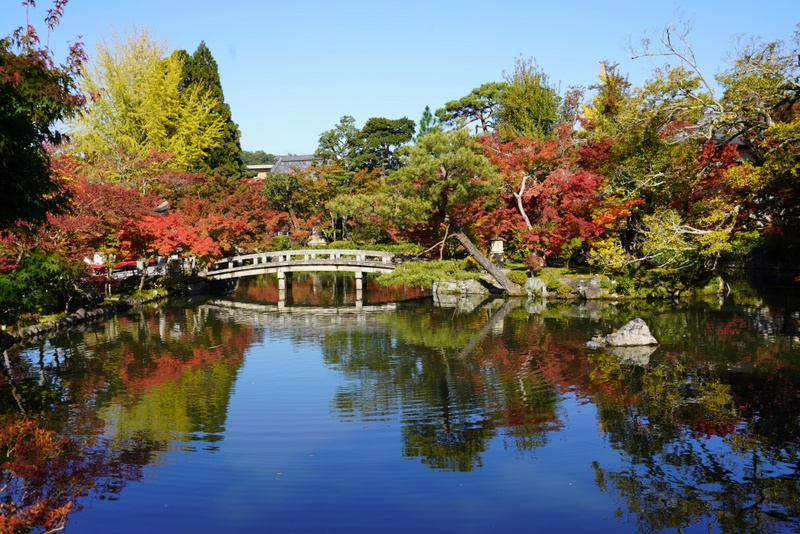
Abbot Yokan (1033-1111), commonly known as “Eikan” became the chief priest and expanded the temple greatly. Eikan who intoned “nembutsu” as many as 60,000 times a day, was highly respected. Later, Zenrin-ji came to be called Eikando.
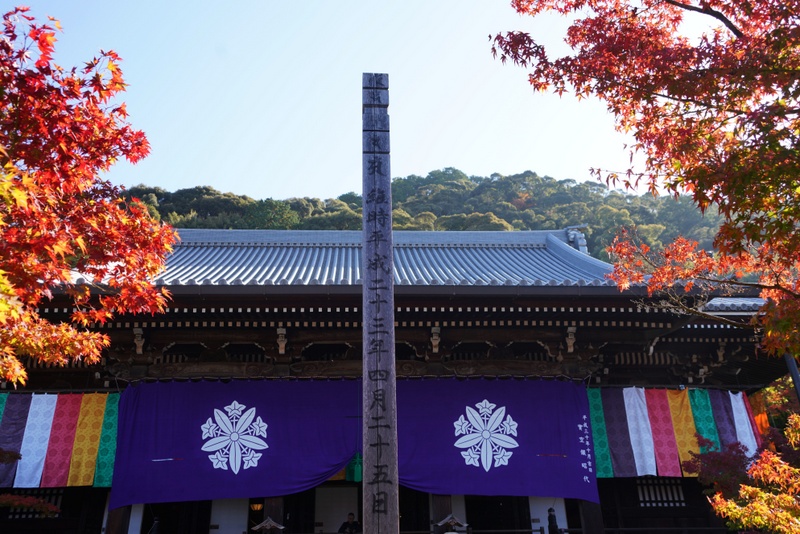
Later, priest Johen became the chief abbot. Though he was a follower of the Shingon Sect, he read the works of Honen, founder of Jodo Sect and convinced that the recitation of “nembutsu” was enough to gain salvation. He therefore invited he highest disciple of Honen, Shoku (1177-1242) to become the next chief priest.
The temple was badly damaged during the Muromachi period and was later reconstructed. It suffered again as a result of anti-Buddhist movement during the Meiji period. Today, the temple has completely recovered and is now the head temple of Jodo Seizan Zenrin-ji Sect with Shoku as founder of the sect.
The temple is known for its prominence as a centre of learning in the past. It has exquisite paintings and the “Turning-back Amida” which is its main icon. I could not recall seeing this unique statue on my last visit in November 2014.
The temple is also famous for its fall foliage. I was here in the fall last time and was overwhelmed by the vibrant and beautiful colours. This time, the foliage colours which were almost at their peak, were stunning. The garden with pavilion, a pond bridge and colourful trees was photogenic.
Unfortunately, we only had an hour to look at the temple and the garden. As a result, I did not have time to fully appreciate the treasures of the temple and the exquisitely beautiful foliage.
Next, we went to the Konkaikomyo-ji Temple 金戒光明寺 (also called affectionately “Kurodani-san” by the people of Kyoto). The temple which had strong connections with the imperial family and Edo shogunate, is one of the head temples of the Jodo Sect of Buddhism.
Honen, founder of the Jodo Sect of Buddhism, built the sect’s first training hall on this site. The entrance fee is ¥1,400 owing to special opening of the Sanmon Gate.
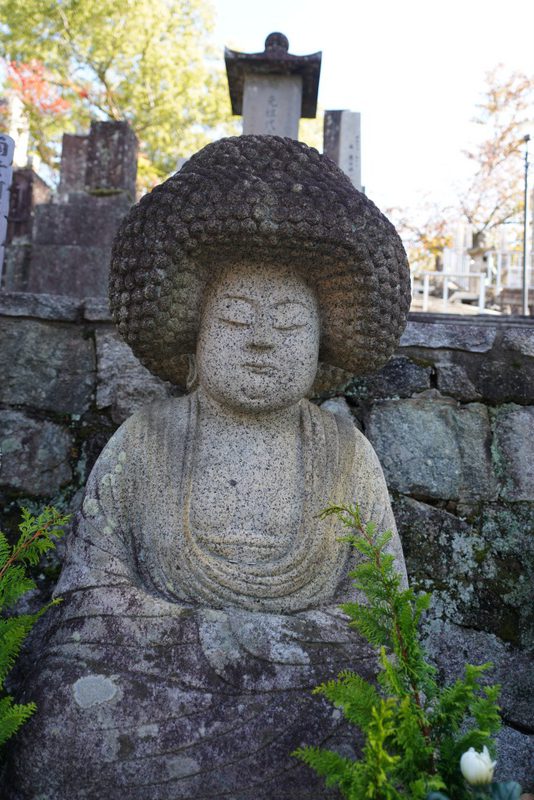
We saw the statue of Kibi-Kannon. It is said that this Kannon saved a mission from disaster at sea on its way back from Tang China 1200 years ago. Because of this, people believe this Kannon has the benefit of traffic or travel safety.
After touring the main temple building, we arrived at the Purple Cloud Garden which depicts Honen’s life in three stages namely childhood, learning in Mount Hiei and finally the founding of the Jodo Sect and the Konkaikomyo-ji Temple. Large and small rock represent Honen and the people around him. White sand and hair moss spread all over the garden.
The temple has a unique Goko-shiyui Amida statue with wild hair. I was surprised to find this lovely stone statue sits comfortably in front of a family tomb in the graveyard.
The next temple we visited was the Sennyu-ji Temple 泉涌寺 which was first founded by Gachirindaishi Shunjyo in 1219 with its main temple completed in 1226. The temple was prosperous as various Buddhist sects including Tendai, Shingon and Jodo could be practised based on the Ritsu (Vinaya) sect. For centuries it was a mortuary temple for aristocrats and the imperial house.
Though I have visited this temple before, I did not know about the Empress Yang – Avalokitesvara statute which was bought back from China in 1230. This time, our guide Miss Wong took us to see this life-size sedentary statue of Kannon that was carved in remembrance of Empress Yang who was known for her beauty.
We walked to the main Buddha’s Hall rebuilt in 1668as a representative work of Chinese style architecture. The statues of Buddha Triad namely Amitabha Buddha, Shakyamuni Buddha and Maitreya Buddha, are enshrined in the inner space of the hall.
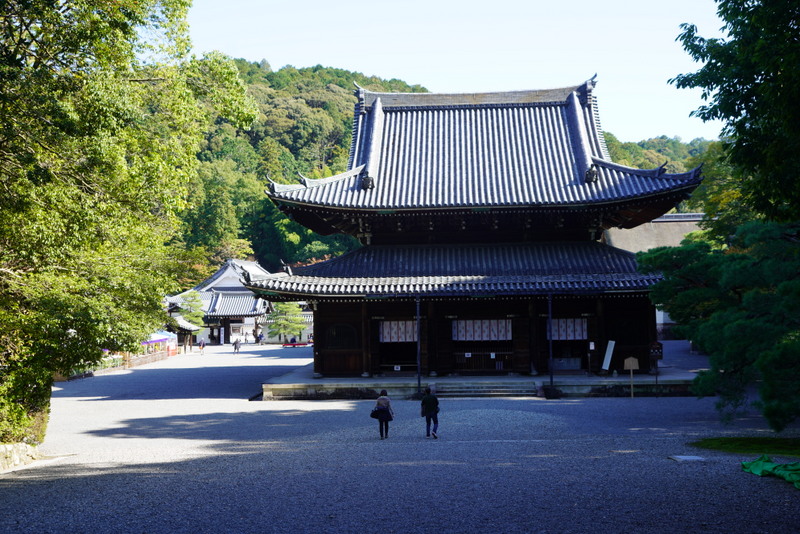
Behind the main hall is the Reliquary Hall enshrining Buddha’s tooth relic in a pagoda inside. The door was closed and I could not see the pagoda. To show my respect, I walked around the hall three times.
Nearby is the stately and beautiful Reimei-den (Mortuary Temple) rebuilt in 1884. Emperor Shijo 四条天皇the 87th emperor of Japan who reigned from 1231 to 1242 was buried here. Mausoleums of successive emperors were built here.
Today’s lunch in a temple restaurant was one of the best meals we had in terms of quality and presentation. We experienced oryoki in authentic monastic style with food served in lacquered six-bowl set.
After lunch, we went to the Daichu-in Temple belonging to the Jodo Sect. It is a small and new temple in a residential area. The deity is the Yashu Buddha.
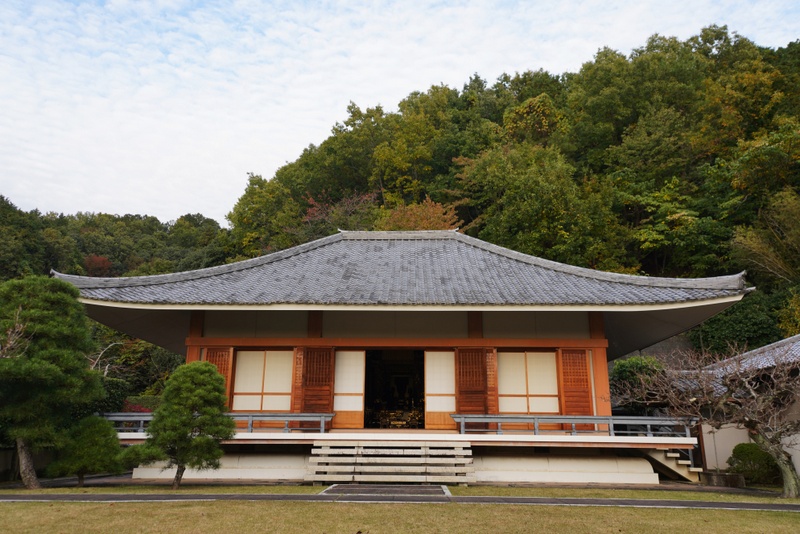
We were warmly received by the head of the temple. Many faithful followers would come here to seek blessing from Yashu Buddha. It is said that if one has headache, he/she can touch the statue’s head and be cured!
The last temple for today was the Nanzen-ji 南禅寺a temple established by Emperor Kameyama in 1291 on the site of his previous detached palace. It has been the headquarters of the Nanzen-ji branch of Rinzai Zen Buddhism臨済宗, one of three sects of Zen in Japanese Buddhism. The other two sects are Soto 曹洞and Obaku 黃檗.
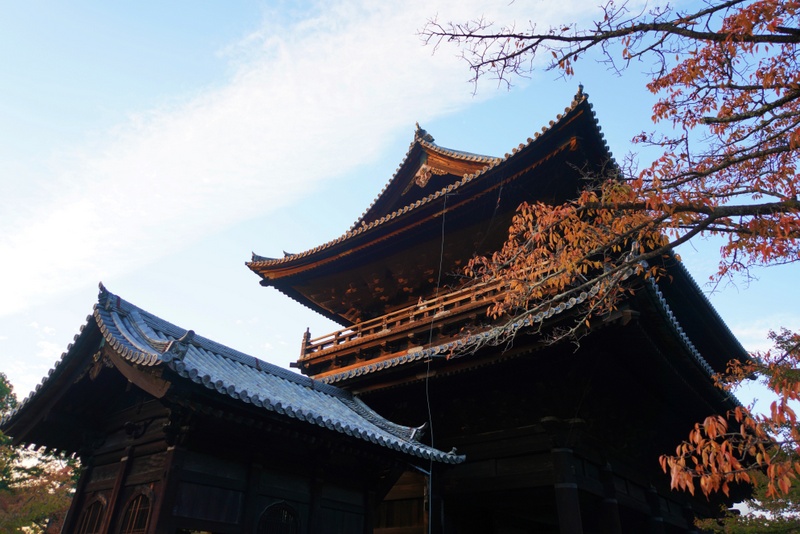
This temple is famous for its Sanmon and Hojo. The Sanmon which was originally constructed in the 13th century, destroyed in 1369 and reconstructed in 1628, is most imposing and magnificent.
The Hojo (abbot’s quarters) was given to the temple by Emperor Go-Yozei. It is notable both for its gardens and its art.
The garden – Built in the 1600s by a famous gardener Kobori Enshu, it mirrors natural forms and is 70% gravel. it is considered one of the most significant examples of karesansui gardens.
Art – There are a variety of important screen paintings on gold backgrounds including two of tigers by Kano Tan’yu.
I visited the temple in November 2014 and saw foliage at its best. Today, the leaves were still green. The temple closed at 5 pm and all visitors had to leave.
We could not get a table at the Nanzen-ji restaurant which is famous for tofu till 7 pm. As a result, our driver kindly drove us to a hill top to see Kyoto at night.
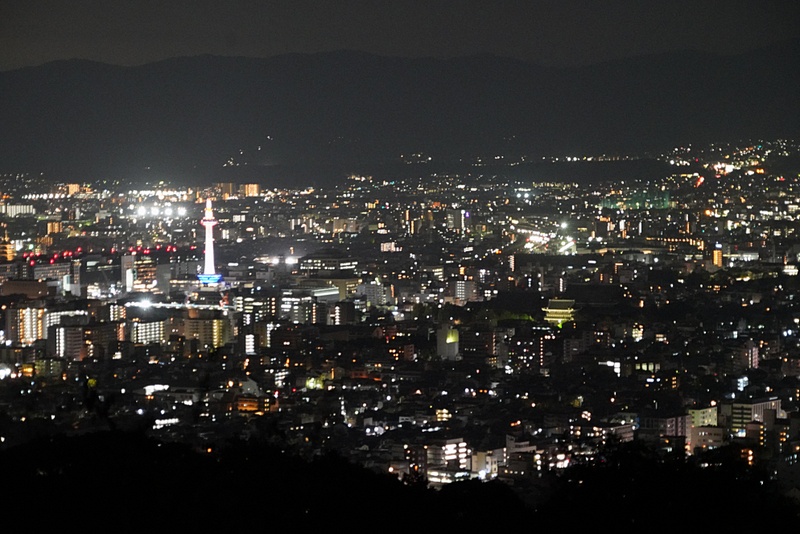
We all had high expectations on the “tofu” dinner. But it turned out to be a disappointment: we had a big bowl of tofu in hot water. This was the main and only course. I love tofu but it can be prepared in more imaginative ways. What an experience!
Day 4 November 14 Thursday: & Mount Hiei
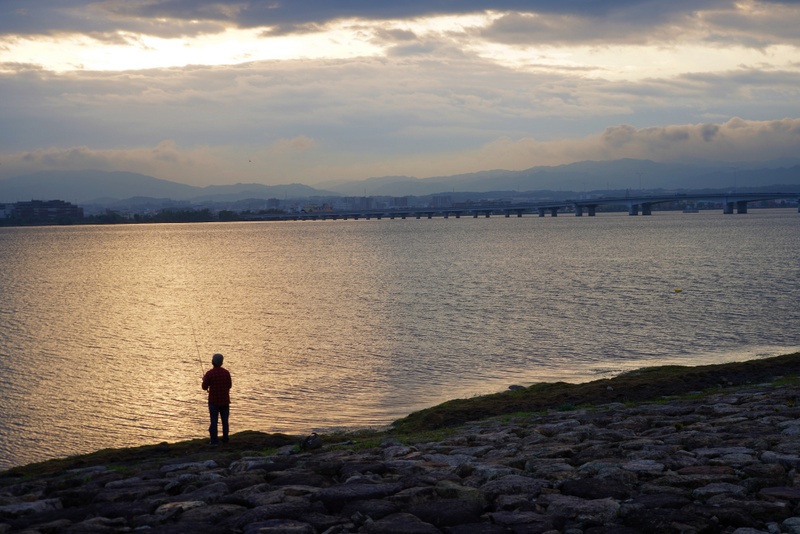
We had a leisure day. We checked out and set off at 8:30 am for Arashiyama. We had an hour’s free time till 10:30 am. Cat and I spent our time in the famous bamboo grove. Somehow, I felt the charm of the area had been spoilt by mass tourism.
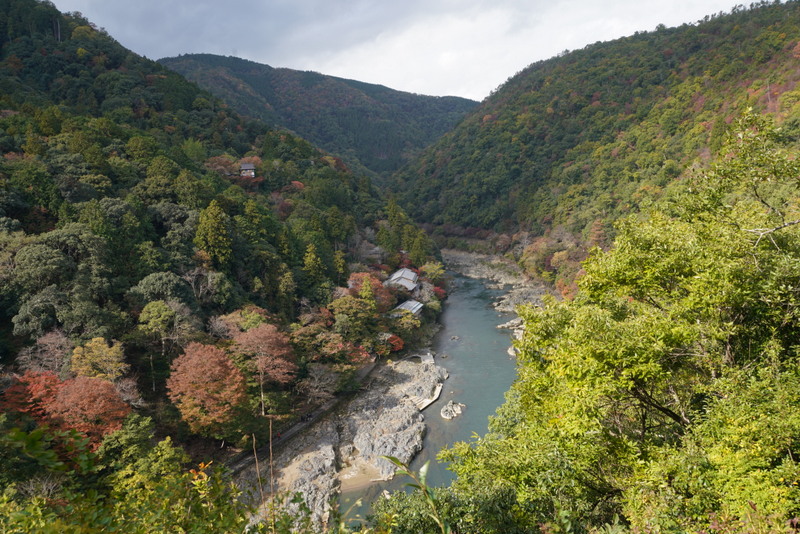
At 10:30 am, the group went into Tenryu-ji Temple天龍寺 another important temple of the Rinzai Zen sect. Built in 1339 by ruling shogun Ashikaga Takauji (1305-1358) who dedicated the temple to Emperor Go-Daigo (1288-1339) who had passed away. He appointed eminent Zen master Muso Soseki (1275-1351) as the founding abbot. The temple officially consecrated in 1345 was designated first among Kyoto’s Five Mountains (the city’s five major Zen temples).
I visited the temple in November 2014. This time, we just had an hour to look at the Sogen Garden which is one of the oldest in Japan. I was impressed by the beautiful foliage colours. Unfortunately, there were too many tourists who spoilt my mood to appreciate the beauty of the landscaped garden and foliage.
I think the arrangements for the morning was unsatisfactory. If I were the tour leader, I would have taken the group to the temple at 9:30 am when it opened. The light was better for photograph and there were fewer tourists. People could spend as much time as they liked in the temple. I would have told the group to meet up outside the temple at 11:30 am to go together to the temple restaurant next door.
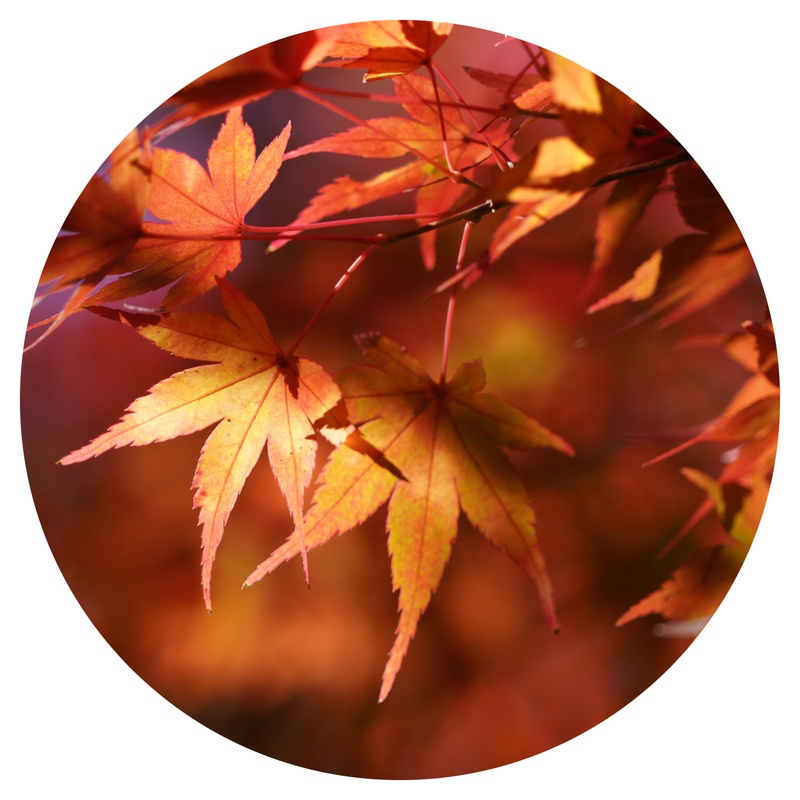
The lunch at the Tenryu-ji Temple Restaurant was fantastic and the best we had on this tour. I love to return on my own again.
After lunch, we headed to the temple of Enryaku-ji 延暦寺 on Mount Hiei 比叡山 which is on the border between Shiga Prefecture and Kyoto Prefecture. We would stay in the Kaikan Hall (the hotel run by the temple).
The Enryaku-ji, the first outpost of the Japanese Tendai sect was founded in 788 atop Mount Hiei by Saicho (767-822). It is one of the most significant monasteries in Japanese history: Honen, Nichiren, Dogen and Shinran all studies at the temple before leaving to start their own practices. At the peak of its power, it was a huge complex of as many as 3,000 sub-temples and a powerful army of warrior monks (sohei). The temple complex was razed by Oda Nobunaga in 1571 to quell the rising power of Tendai’s warrior monks. It has been rebuilt and remains the headquarters of the Tendai sect.
The huge complex comprises two main areas: To-do (east pagoda) and Sai-to (west pagoda). We only visited the To-do Area. We first visited the Konpon Chu-do (main temple) the third largest wooden structure in Japan. The original structure established by Saicho was a small-scale Yakushido for the worship of Yashu Buddha. In the 9th century, this hall became flanked on either side by a hall for the worship of Monju and s sutra repository. The basic floor plan for today’s hall which came about when these three separate buildings were consolidated under a single roof, was completed in 1640.
The architectural style of the main hall of the temple is different from other temples. It has an outer section floored with boards and an inner section whose floor is somewhat lower. The building is painted in several different colours and is surrounded by a covered corridor. I learn that this style is typical of the main temple of the Tendai sect.
The massive temple building is under renovation which is scheduled for completion in 2026, It was dark inside and I could not see the interior well. A monk pointed to me the lamps in front of Yashu Buddha that have been burning since the founding of the temple.
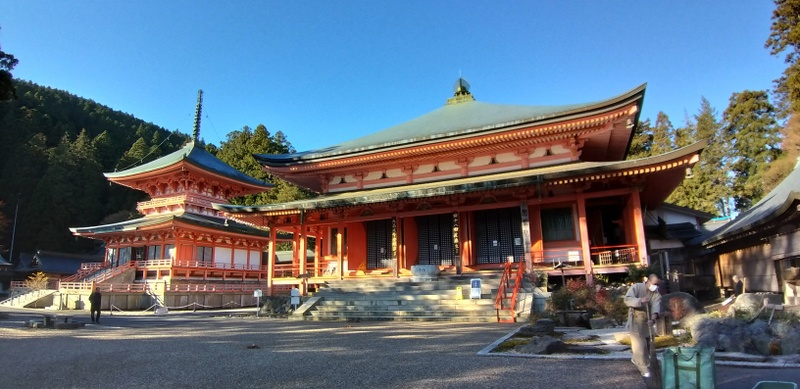
We walked uphill and passed by the Great Lecture Hall and Ordination Hall before reaching the Amida Hall and East Pagoda.
On the way back to the hotel, I visited the Monju-ro Gate and Bell Tower.
We saw some foliage colours on the mountain. Cat and I both like the temple hotel which is comfortable. We had fantastic views of Biwa Lake from our room. I also enjoyed the onsen. I would love to spend a couple of days in this temple hotel on my next visit.
Day 5 November 15 Friday: Mount Hiei
We had to get up very early in order to attend a praying session in the main temple at 6:30 am. By the time Cat and I arrived, over 100 people were already in the hall. Few monks were chanting and praying for half an hour. It was dim but atmospheric and soothing.
After breakfast, I walked uphill to visit the East Pagoda, Amida Hall, Lecture Hall and Monju-ro Gate one more time.
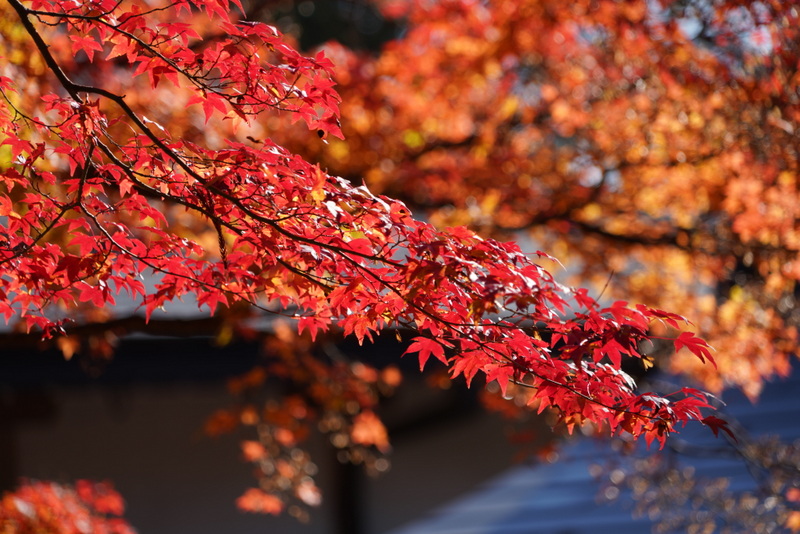
At 9:30 am, our group had a Zen meditation session conducted by a monk. Miss Wong was the translator. He gave an introductory talk on meditation and how to begin. He has been a monk in this temple for over 20 years. He said he had once meditated for 90 days.

Time passed quickly and I enjoyed the session. We had lunch at noon. The group departed for the airport at 1 pm and their flight to Hong Kong took off after 5 pm.
END OF TEMPLE TOUR


